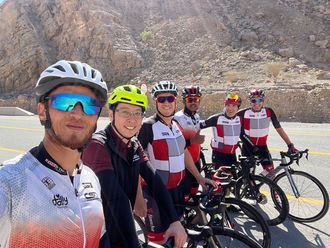
Birds of a feather flock together, they say. Apparently it is true. If you believe something to be true and another re-affirms it, no matter what the facts, you most probably agree and be aligned. One of the reasons fake news spreads much faster as opposed to the truth.
There’s a term for this in psychology – it is called ‘confirmation bias’. And it doesn’t stop at just one type of bias. There are multiple kinds: recency, ostrich, gambler’s fallacy, actor observer, overconfidence, availability heuretic, to name a few. May sound strange, but each of them play a key role in our daily decision making – some good, some bad.
Ravi Matthew, a business coach, and Dubai-based businessman says, “Biases are usually unfair or prejudicial and are often based on stereotypes, rather than knowledge. So unless we understand bias and how it can creep up unobtrusively, it can skew our thought process and unwittingly force us to make questionable decisions.” In other words, we see the world through filters and make decisions on the basis of what we see.
There are over 25 biases that can affect us, but here are the ones that are the most common traps, say experts.
The confirmation bias

“We subconsciously seek out information that reinforces our existing beliefs while ignoring anything that doesn't,” explains Noona Nafousi, a Dubai-based psychologist. “Our brains never wants to make a liar out of us, which is why it seeks information to support our beliefs.” So, we will believe something that confirms our views, even though the evidence presented might be rather be inconclusive. We just review the information that confirms our ideas, ignoring the evidence that doesn’t. As a result, we remember selective information that aligns with what we believe.

Biases are usually unfair or prejudicial and are often based on stereotypes, rather than knowledge. So unless we understand bias and how it can creep up unobtrusively, it can skew our thought process and unwittingly force us to make questionable decisions...
At work, it leads to decisions and actions that align with pre-existing beliefs, often limiting alternative perspectives and innovation, says Rowen Nadia Astrom, Dubai-based career leadership expert and NLP practitioner. “You may have heard the term ‘group think’, which asserts certain belief systems and stereotypes, depending on the majority representation within an organisation. Recognising and mitigating this bias is essential for fostering a more objective, inclusive, and effective work environment,” she says.

We subconsciously seek out information that reinforces our existing beliefs while ignoring anything that doesn't. Our brains never wants to make a liar out of us, which is why it seeks information to support our beliefs
Confirmation bias can lead to poor decision-making too. For instance, if we are convinced that a person is a good friend, we conveniently ignore all the red flags, because we choose not to believe it. “To be objective, we must actively, consciously and intentionally seek out to notice what our beliefs are and how this could be impacting our narrative and ultimately our decision-making process,” adds Nafousi.
How to combat confirmation bias?
For starters, acknowledge that you are falling prey to the confirmation bias, according to Maham Rasheed, clinical psychologist at Dubai-based Nabta Healthcare. You need to make a conscious effort to examine different views, speak to other people, rather than selectively examining the evidence that matches your beliefs. A person has to be ready to change their mind and existing beliefs, in case they see something that poses a challenge to what they believe. "Engage in mindfulness exercises to stay present and aware, as they reduce the likelihood of being swayed by biases," she says.

Engage in mindfulness exercises to stay present and aware, as they reduce the likelihood of being swayed by biases
Fighting the ostrich

The ostrich is well known for its ability to stick its head in the sand to pretend that danger does not exist. It’s their way of protecting themselves. So, how does this pattern translate into human behaviour?
Think about it: Have you avoided a phone call with a friend who you had a fight with, recently? Do you avoid checking your progress at work because you know that you’ve fallen short of expectations? If you do, you’ve succumbed to the ostrich bias.
“Ostrich attitude is an inclination to avoid unpleasant or uncomfortable information, often leading to ignorance and inaction,” explains Astrom. People play ‘ostrich’ to protect their own image and self-esteem as they fear that they would be crushed by anything negative. According to a 2017 study published in the American research paper Information Avoidance, people can do this by terms of physical avoidance. Here, they avoid reading specific magazines or articles or talking to certain people. They can also resort to being inattentive, or reading information in such a way that they exclude any unpleasant information. This is also in tandem with the confirmation bias. Avoiding the truth is prolonging the imminent pain, and will just result in an amplification of the problem in the long run.
“Overcoming this bias requires confronting difficult truths and seeking out diverse perspectives to make informed decisions," says Astrom. This is important for managers and leaders to manage teams and business and examine their approach to risk and crisis communications, she adds.

Overcoming this bias requires confronting difficult truths and seeking out diverse perspectives to make informed decisions...
You need to ask yourself difficult questions, why you are choosing to avoid such information. Another solution is to ensure there are practical mechanisms in place to deal with what you’re trying to avoid. For example, you can schedule reminders for yourself for monthly bill payments to avoid any problem later. It’s also important to have a strong support system, who can hold you accountable and make you reflect on what you’re trying to avoid.
The recency bias
This is one of the most common biases seen at the workplace, explains Matthew. “The most common instance being during annual appraisals. I have very often found managers falling prey to this bias, by reviewing their team’s performance, based on recent events instead of evaluating their performance over the entire evaluation period. Worse still are instances where an employee has garnered much goodwill through hard work and diligence over many years, only to have it all forgotten and overlooked when the going gets tough,” he says.

It is the tendency to give more weight to recent information and events while ignoring past data, says Astrom. An example would be refusing to learn how to drive, because someone in the neighbourhood had an accident while trying to learn how to drive.
“To manage recency bias, we must actively seek out historical data and consciously weigh it against recent developments before making decisions,” says Astrom. Or as Nafousi puts it, keep the bigger picture in mind.
As the experts explain, it’s always difficult to re-eavaluate biases, but in the case of the recency bias, take a step back and think clearly about your decision-making process. How closely have the recent events influenced your beliefs?
Nafousi, Rasheed and Matthew list out the other common biases that affect our way of thinking:
Anchoring bias: This is when we become attached to the first piece of information we come across, ignoring the rest or not looking for more. To counter this, we need to be open to be curious about other facts and perspectives.
“A very common instance of the anchoring bias is seen when we’re hiring someone, and they turn up at the interview a few minutes late or slightly disheveled,” explains Matthew. “Our instinct and bias causes us to hold onto those first few nuggets of information and as a result the interview almost always starts off on the wrong foot. It goes without saying, that while sometimes such instances do give accurate insights on a person’s tardiness, having a bias on this matter could also mean that we ignore someone who’s just having a bad day,” he says.

Availability heuretic: This is another trap to watch out for. "It makes us rely too heavily on easily accessible information, missing out on important but hard-to-find data," explains Nafousi. We should be sure to include a variety of sources and viewpoints to get the full picture,” she says.
Loss aversion: It is the inclination to avoid losses, even at the cost of missing out on long-term gains. Taking a calculated risk can be scary, but sometimes it's necessary to make progress, says Nafousi.
The gambler’s fallacy: As Rasheed explains, this bias is our belief that the probability of a random event occurring in the future - predicting its occurrence based on previous occurrences. You, essentially, take a gamble based on past outcomes. In order to overcome this tricky bias, we need to assess the events separately and independently.
The fundamental attribution error: You failed an exam. However, you say that the teacher threw a curveball at you, by introducing some trick questions. On another occasion, you did well in an exam, but someone else didn’t. You attribute your success to hard work, and say that the other person failed because they didn’t study. Essentially, this bias makes us believe that we act because of a situation. Others react owing to a personality trait, we feel.
How do we deal with biases, in general?
It’s difficult, but not impossible. It requires awareness, mindfulness, and the ability to just step back at times.
“Implementing decision-making frameworks can help provide a set of guidelines and eliminate a degree of bias, depending on the situation,” says Astrom, acknowledging that decision-making is unique to everyone. “Managing biases requires an awareness of their presence and implications in various aspects of our personal and professional lives.”
Accepting our “mental quirks”, is the first step to making better decisions, says Nafousi. “By actively working to counteract our biases, we can ensure our choices are based on reason and evidence, not just the illusions in our heads,” she says.
While it is humanly impossible for us to have absolutely no biases, Matthew puts down a few strategies:
• It is important that we take the time to understand what is causing our bias, and why.
• We need to arm ourselves with the right kind of knowledge and exposure, that will force us to look beyond our own opinions, and instead listen and learn from others.
• It is often helpful to put ourselves in another person’s shoes and see things from their point of view. We need to consciously take the time to understand what causes a person to behave in a certain way, without forming an opinion about their behaviour or developing a bias towards them.
• We need to consciously work towards networking and befriending people who aren’t people we would normally be friends with.











